Abstract
The opsonic requirements of strains of Type III Group B streptococci (GBS) were studied using Luminol-dependent chemiluminescence and microscopy. Growth and storage conditions, particularly any reduction in the pH of the medium, affected GBS resistance to opsonization. Opsonization was complement-dependent but there was considerable variation in the requirements of individual strains for the classical and alternative pathways. Antibody was also necessary for opsonization. A few type III GBS strains were resistant to opsonization by pooled serum known to contain type-specific antibody, raising the possibility that protective antibody might in certain circumstances be strain- rather than type-specific. Treatment of these strains with neuraminidase, however, rendered them sensitive to opsonization by the same pool of serum. The resistance of GBS to opsonization in the neonate, where complement activity can be reduced and antibody levels are low, may be a major determinant of virulence.
Full text
PDF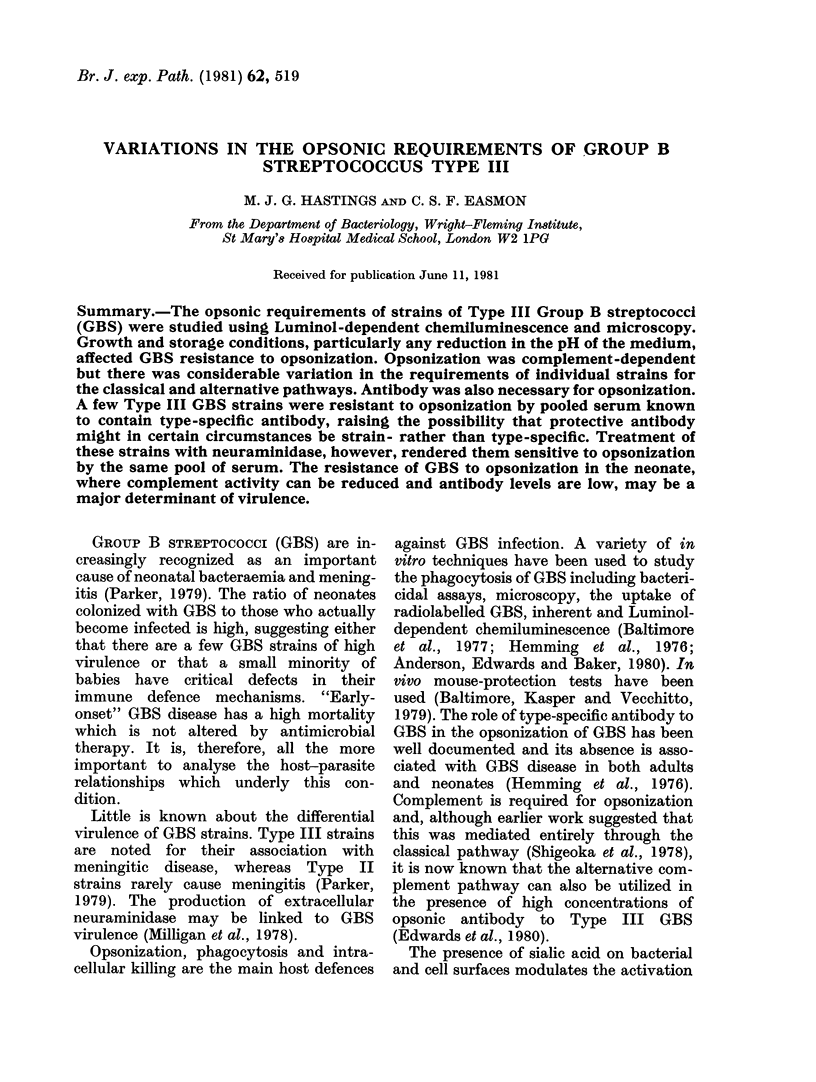


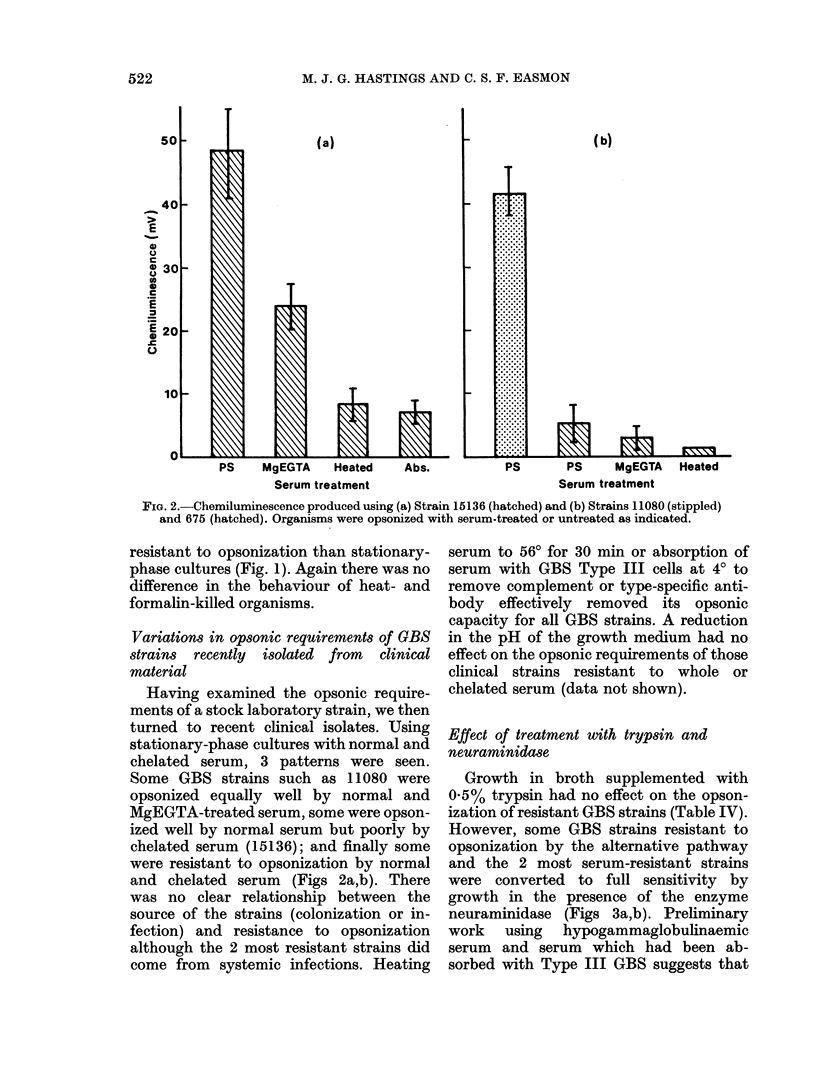
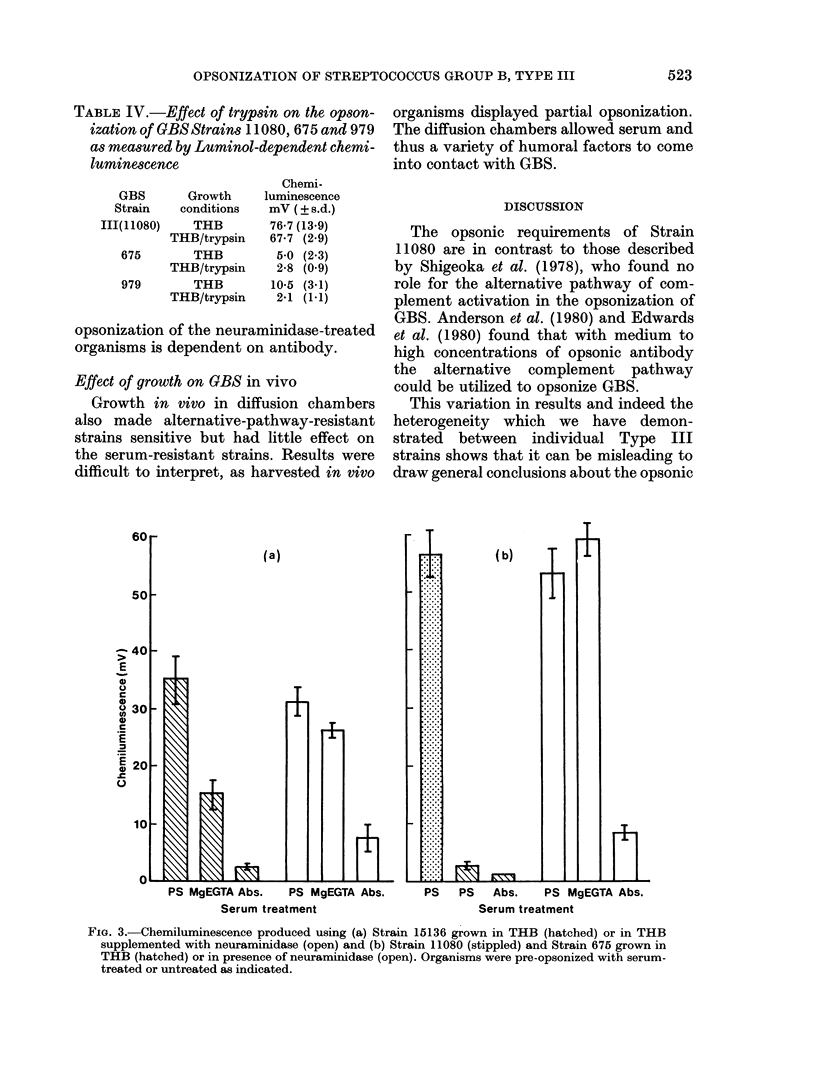
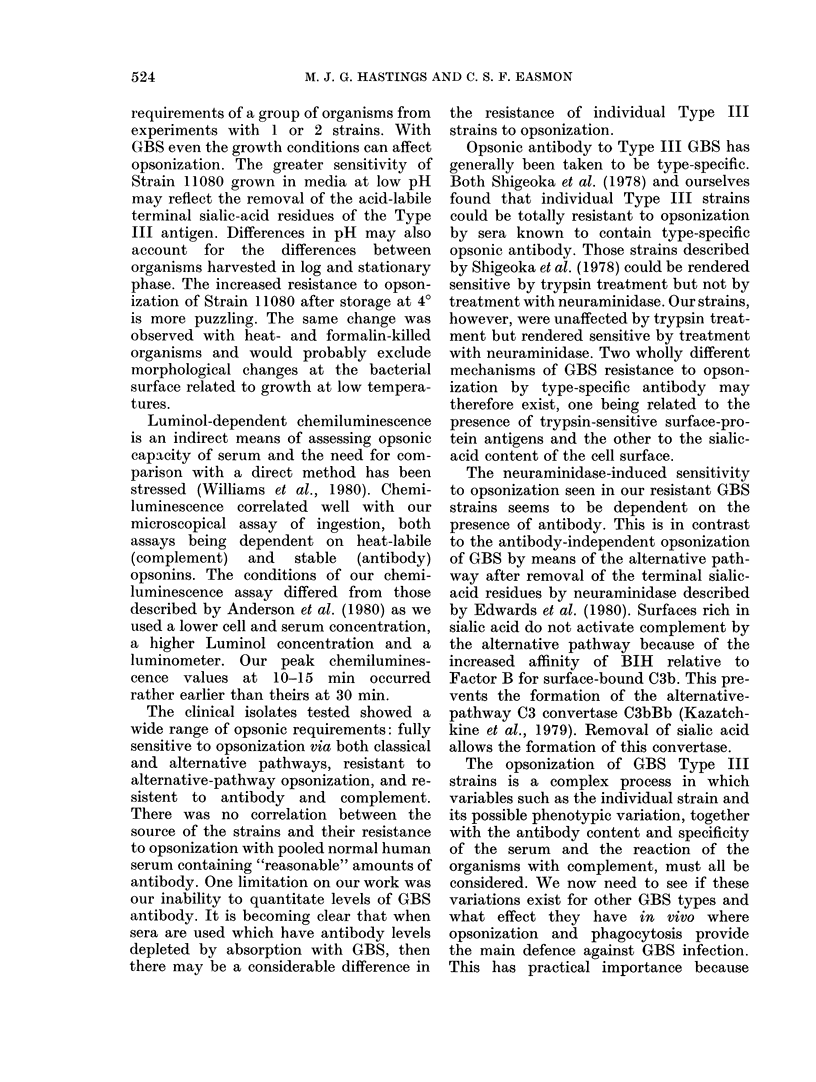
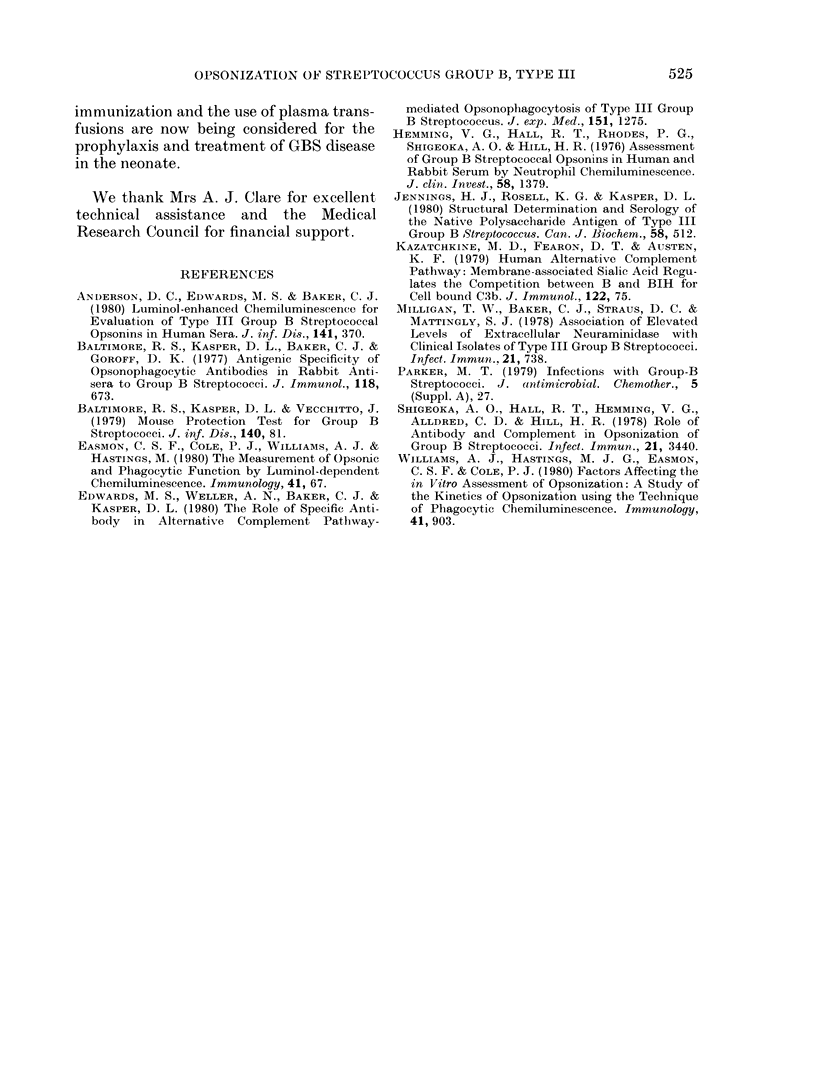
Selected References
These references are in PubMed. This may not be the complete list of references from this article.
- Anderson D. C., Edwards M. S., Baker C. J. Luminol-enhanced chemiluminescence for evaluation of type III group B streptococcal opsonins in human sera. J Infect Dis. 1980 Mar;141(3):370–381. doi: 10.1093/infdis/141.3.370. [DOI] [PubMed] [Google Scholar]
- Baltimore R. S., Kasper D. L., Baker C. J., Goroff D. K. Antigenic specificity of opsonophagocytic antibodies in rabbit anti-sera to group B streptococci. J Immunol. 1977 Feb;118(2):673–678. [PubMed] [Google Scholar]
- Baltimore R. S., Kasper D. L., Vecchitto J. Mouse protection test for group B Streptococcus type III. J Infect Dis. 1979 Jul;140(1):81–88. doi: 10.1093/infdis/140.1.81. [DOI] [PubMed] [Google Scholar]
- Edwards M. S., Nicholson-Weller A., Baker C. J., Kasper D. L. The role of specific antibody in alternative complement pathway-mediated opsonophagocytosis of type III, group B Streptococcus. J Exp Med. 1980 May 1;151(5):1275–1287. doi: 10.1084/jem.151.5.1275. [DOI] [PMC free article] [PubMed] [Google Scholar]
- Hemming V. G., Hall R. T., Rhodes P. G., Shigeoka A. O., Hill H. R. Assessment of group B streptococcal opsonins in human and rabbit serum by neutrophil chemiluminescence. J Clin Invest. 1976 Dec;58(6):1379–1387. doi: 10.1172/JCI108593. [DOI] [PMC free article] [PubMed] [Google Scholar]
- Kazatchkine M. D., Fearon D. T., Austen K. F. Human alternative complement pathway: membrane-associated sialic acid regulates the competition between B and beta1 H for cell-bound C3b. J Immunol. 1979 Jan;122(1):75–81. [PubMed] [Google Scholar]
- Milligan T. W., Baker C. J., Straus D. C., Mattingly S. J. Association of elevated levels of extracellular neuraminidase with clinical isolates of type III group B streptococci. Infect Immun. 1978 Sep;21(3):738–746. doi: 10.1128/iai.21.3.738-746.1978. [DOI] [PMC free article] [PubMed] [Google Scholar]
- Parker M. T. Perinatal and neonatal infections: infections with group-B streptococci. J Antimicrob Chemother. 1979 May;5 (Suppl A):27–37. doi: 10.1093/jac/5.supplement_a.27. [DOI] [PubMed] [Google Scholar]
- Williams A. J., Hastings M. J., Easmon C. S., Cole P. J. Factor affecting the in vitro assessment of opsonization: a study of the kinetics of opsonization using the technique of phagocytic chemiluminescence. Immunology. 1980 Dec;41(4):903–911. [PMC free article] [PubMed] [Google Scholar]


